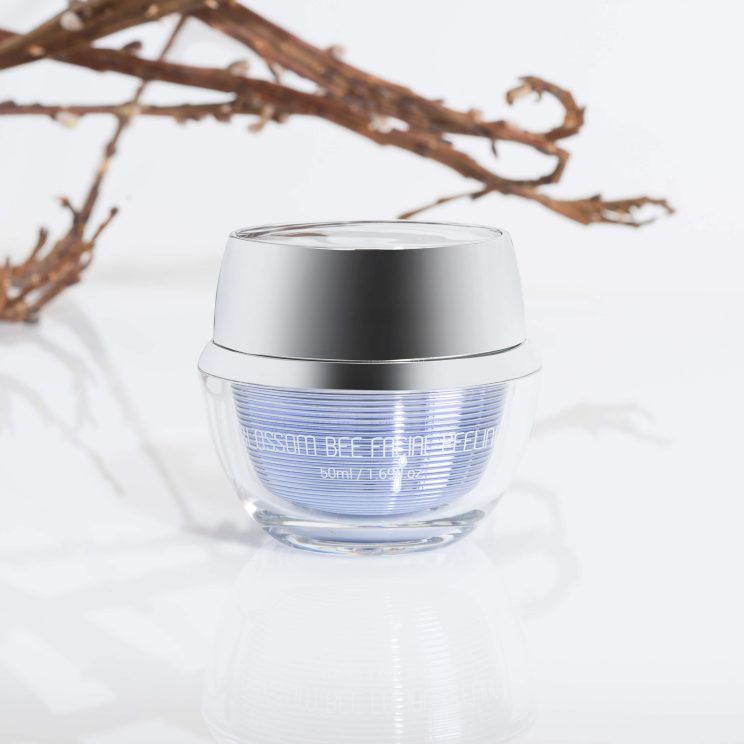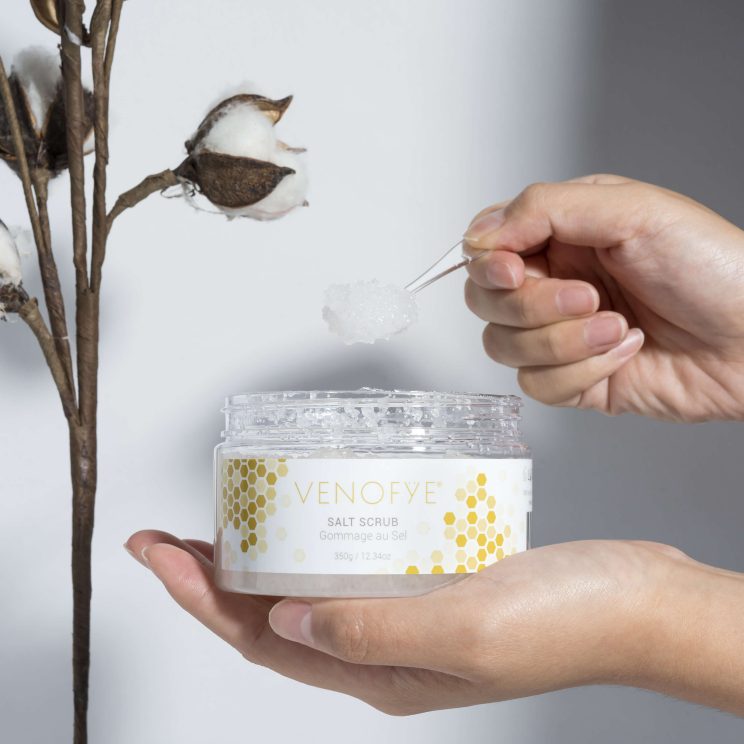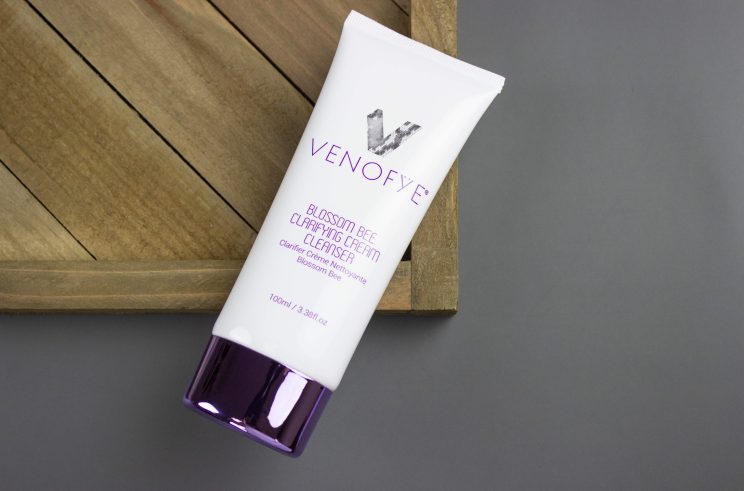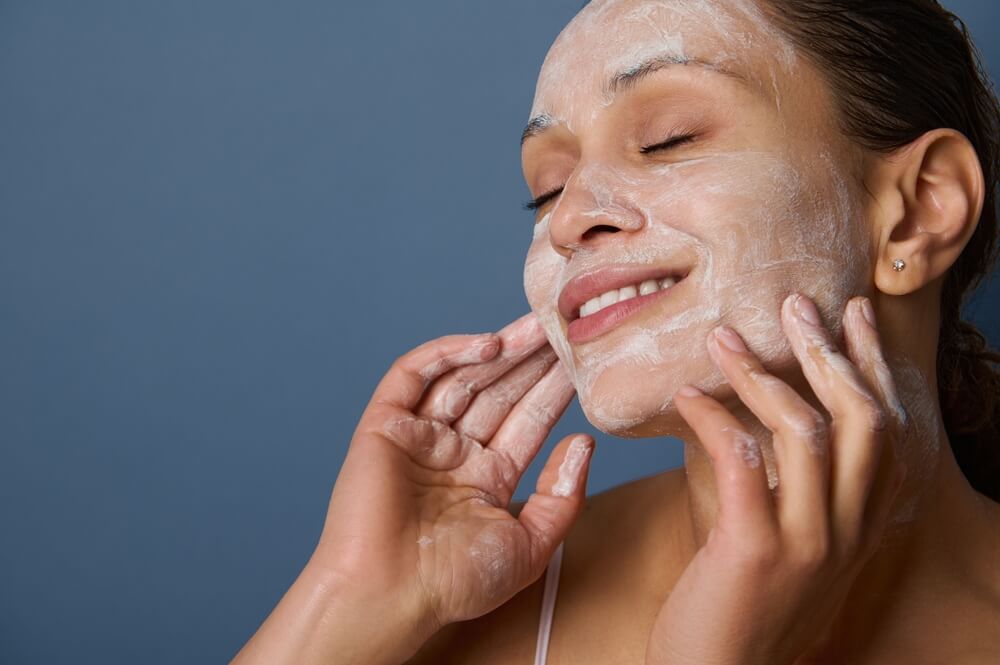If you want to keep your skin looking bright, smooth, and youthful, regular exfoliation is a must. However, getting this right can be tricky. Not only do you need to choose a suitable type of exfoliator for your skin, but the frequency at which you exfoliate, along with how you incorporate an exfoliator into your skincare routine, all need to be finely balanced in order for you to reap rewards.
Fortunately, that’s something that Venofye can help with. Read on as we delve deeper into the art of exfoliation to give you all of the knowledge and tools that you need to renew your complexion.
Why Exactly is Exfoliation So Important in the First Place?
Exfoliation is a skincare technique that involves removing dead skin cells from the surface of the skin. This is something that your skin does naturally but, as it ages, the rate at which it sheds its dead skin cells slows down. This causes those dead skin cells to build up on the skin’s surface, which can lead to a number of issues that regular exfoliation can prevent.
So, what exactly are the benefits that come from keeping your skin clear of dead skin cells? Here are some of the main perks:
Brightens the Complexion
A brighter complexion is one of the immediate benefits that you’ll experience after exfoliation. This is down to how dead skin cells cause the skin to look dull due to how they aren’t able to reflect light in the way that fresh new skin cells can. Removing those skin cells will give the skin a newfound radiance!
Reduces the Appearance of Clogged Pores and Breakouts
If dead skin cells are allowed to remain on the skin for too long, they soon end up working their way into the pores. Once this starts to happen, blockages won’t be too far away. For those with acne-prone skin, this can be disastrous as clogged pores can quickly lead to breakouts.
Regularly exfoliating your skin will keep your pores clear of blockages and, therefore, help to keep your complexion acne-free.
Softens the Look of Fine Lines and Wrinkles
When dead skin cells pile up on the skin’s surface, it gives the skin a rough and dry finish. This then makes fine lines and wrinkles more noticeable. By keeping the surface of your skin consistently exfoliated, you’ll be able to reduce the visibility of any creases on your face.
Evens Out the Skin Tone
If your skin has been discolored in any way, whether due to sun damage, acne marks, or anything else, exfoliation is something that you definitely want to be doing! Although it’s not going to instantly get rid of those darker areas of skin, regularly exfoliating will speed up the rate at which the appearance of discoloration fades. You’ll end up with an even and clear skin tone far sooner than if you weren’t to exfoliate.
Leaves the Skin Feeling Smoother and Softer
As mentioned earlier, dead skin cells feel rough and dry. Once you have a layer of these on your skin, then your overall complexion will also look rough and dry. Exfoliate them away and your skin will be left looking and feeling immediately smoother and softer.
Improves Product Penetration
Skincare products work best when they have a clear path to your skin cells. If there are dead skin cells blocking the way, many products will struggle to penetrate through them. Instead, they’ll simply sit over the top of those dead skin cells, where they won’t be able to have much of an effect.
By exfoliating those dead skin cells away, you’ll be able to encourage the rest of your skincare products to make their way down into your skin. This will then make them more effective, giving you better results from your entire skincare routine.
The Different Types of Exfoliators
This is where things can get a little tricky; understanding the different types of exfoliators out there. Fortunately, all of those many exfoliating products that you see on store shelves can be categorized as one of the following:
Physical Exfoliation
Physical exfoliation is when you use an abrasive material to manually scrub away the dead skin cells on your skin’s surface. Face and body scrubs are the most popular physical exfoliants out there but dry brushes and washcloths also count.
Physical exfoliation can be very satisfying because it produces almost instant results. As an added bonus, the way in which the abrasive exfoliant is massaged over the skin also helps to boost circulation, giving the skin a rosy glow.
Chemical Exfoliation
Chemical exfoliation makes use of acids to exfoliate the skin. Rather than immediately ridding the skin of its dead skin cells, these acids break down the glue-like bond that holds dead skin cells to the surface of the skin. This then allows the skin to easily shed those cells itself.
There are two types of exfoliating acids out there; alpha-hydroxy acids (AHAs), which are water-soluble, and beta-hydroxy acids (BHAs), which are oil-soluble.
Enzyme Exfoliation
Enzyme exfoliation is similar to chemical exfoliation. However, the enzymes used for this focus on the protein encased within dead skin cells, rather than the bond that holds onto dead skin cells, breaking this down to get rid of them.
This is quite a slow process, especially when compared with the other forms of exfoliation. However, with the enzymes used being naturally derived (most come from fruits, such as papaya or pineapple), it’s also one of the gentlest ways to exfoliate.
Choosing an Exfoliator For Your Skin Type

So, how do you know which type of exfoliator to choose for your skin?
Well, that all depends on your skin type!
If you have dry or sensitive skin, you need to be very careful that you don’t pick an overly harsh exfoliator that’s going to exacerbate your skin concerns. Enzyme exfoliation would be a safe bet but a gentle chemical or physical exfoliator would work well too.
The Venofye Blossom Bee Facial Peeling would be a great choice. It’s a physical exfoliant that relies on the abrasive power of nut shells. However, unlike many of the other nut shell exfoliants out there, this one consists of shells that have been ground into a very fine powder. This means that it won’t tear or scratch your skin and will instead provide a gentle yet effective exfoliation.
Our facial peel is ideal for those with normal, combination, and oily skin types too. However, if your skin is exceptionally oily and prone to breakouts, you may find it more beneficial to use a chemical exfoliator containing BHAs. Since these are oil-soluble, they’ll be able to penetrate through the layer of sebum that covers your skin in order to work their magic, which is something that other exfoliators may struggle to do.
Choosing an Exfoliator For Your Body

Of course, it’s not just the face that needs to be exfoliated. The skin on your body requires the same love and care!
With that said, the skin on the body is much thicker and tougher than the skin on the face. Therefore, chemical and enzyme exfoliators simply won’t cut it. This is why, when it comes to exfoliating the body, scrubs, like the Venofye Salt Scrub, tend to be the preferred choice.
Salt contains relatively large granules that are abrasive, yet not too much. At the same time, sea salt is also loaded with numerous skin-loving minerals that leave the skin feeling healthier overall.
Where Does Exfoliation Fit Into Your Skincare Routine?

Once you’ve found a suitable exfoliator for your skin, you need to make sure that you’re using it in the correct way in order to experience its benefits.
This means starting off with a cleanse. Although exfoliation provides a cleanse too, its main purpose is to remove dead skin cells. If your skin is covered with dirt, sebum, and other impurities, it will focus on those instead, meaning that it won’t be quite as effective on your dead skin cells.
It’s important to use a gentle cleanser before exfoliating. This way, you won’t end up disrupting your skin’s natural barrier too much. A formula like Venofye’s Blossom Bee Clarifying Cream Cleanser would be ideal because of how moisturizing and hydrating it is. Instead of stripping the skin dry in the way that many other cleansers do, it will leave your skin barrier feeling strong and supported.
After cleansing, you can then go ahead and exfoliate your skin.
Once this is done, continue on with the rest of your skincare routine. We would recommend applying a toner after exfoliating, following on with a serum and then a moisturizer.
How Often to Exfoliate Your Skin
Finally, let’s talk about how often you should be exfoliating your skin. Going overboard with this will lead to over-exfoliation. This is when the skin barrier ends up damaged, which can lead to a wide variety of different skin concerns, including acne, dryness, and sensitivities.
Likewise, if you don’t exfoliate enough, then you won’t really see many benefits from it. Instead, dead skin cells will continue to pile up on your skin’s surface. When you do decide to sporadically exfoliate, you’ll struggle to remove them all since there will be such a significant build-up.
Unfortunately, there’s no set answer as to how often you should be exfoliating. Again, this all depends on your skin type.
If you have dry or sensitive skin, then you’ll probably only need to exfoliate once a week. Since your skin barrier is already damaged, you definitely don’t want to overdo it.
If you have oily, acne-prone skin, you’ll need to exfoliate more often, usually two or three times a week. Again, don’t overdo it because, even though exfoliation may be an effective way to get rid of the excess sebum that your skin is producing, exfoliating too often will end up dehydrating your skin. This will only stimulate even more sebum production in the long run.
Normal and combination skin types fall somewhere in the middle. You’ll likely need to exfoliate a couple of times a week.
Summary
As you can see, exfoliation is vital if you want your skin to look bright and healthy. However, understanding the art of exfoliation is also important in order to ensure that you carry this technique out in the most effective way possible. Follow the tips that we’ve shared and you shouldn’t have any problems!
Click here to browse more of Venofye’s bestselling skincare products.




0 comments on “The Art of Exfoliation: Renew Your Complexion With the Right Products”